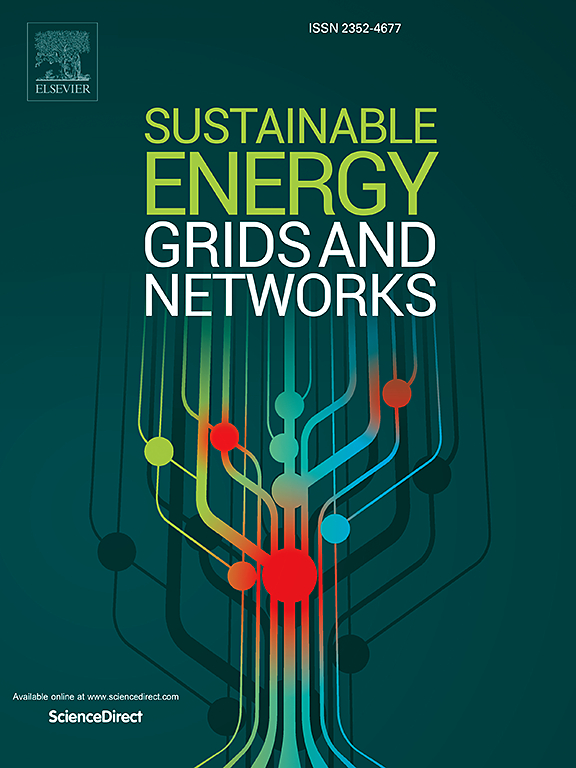Optimal operation of multi-energy carriers considering energy hubs in unbalanced distribution networks under uncertainty
IF 4.8
2区 工程技术
Q2 ENERGY & FUELS
引用次数: 0
Abstract
This article presents a two-stage stochastic programming model to address the dispatching scheduling problem in an energy hub, considering an unbalanced active low-voltage (LV) network. A three-phase version of the second-order cone relaxation of DistFlow AC optimal power flow (AC-OPF) is employed to incorporate unbalanced network constraints, while the objective minimizes the Local Energy Community (LEC) operational cost. The model results have been validated using OpenDSS, encompassing energy losses, voltage levels, and active/reactive power. Likewise, a comparative analysis between the three-phase model and the traditional single-phase model, using a modified version of the IEEE European LV Test Feeder as a case study, reveals interesting differences, such that the single-phase model underestimates voltage limits during photovoltaic (PV) system operation and overestimates energy purchased from the main grid, compared with the three-phase model. Similarly, the comparison results reveal that discrepancies between the single and three-phase models intensify as the power injected from PV systems rises. This notably impacts the total energy purchased from the grid, battery operation, and the satisfaction of thermal consumption through electricity. Finally, while the three-phase model offers valuable insights into security levels for voltage and grid energy purchase, its longer computational time makes it more suitable for strategic use rather than daily operational frameworks.
不确定性条件下不平衡配电网络中考虑能源枢纽的多能源载体优化运行
本文提出了一种两阶段随机编程模型,用于解决能源枢纽中的调度调度问题,该模型考虑了不平衡的有源低压(LV)网络。该模型采用了 DistFlow 交流最优功率流 (AC-OPF) 二阶圆锥松弛的三阶段版本,以纳入不平衡网络约束,同时目标最小化本地能源社区 (LEC) 运营成本。模型结果已通过 OpenDSS 验证,包括能量损失、电压水平和有功/无功功率。同样,以修改版的 IEEE 欧洲低压试验馈线为案例,对三相模型和传统单相模型进行了比较分析,发现了有趣的差异,例如,与三相模型相比,单相模型低估了光伏(PV)系统运行期间的电压限制,并高估了从主电网购买的能源。同样,比较结果表明,随着光伏系统注入功率的增加,单相和三相模型之间的差异也会加剧。这明显影响了从电网购买的总能量、电池运行以及通过电力满足热能消耗。最后,虽然三相模型为电压和电网能源购买的安全等级提供了有价值的见解,但其较长的计算时间使其更适用于战略用途,而非日常运行框架。
本文章由计算机程序翻译,如有差异,请以英文原文为准。
求助全文
约1分钟内获得全文
求助全文
来源期刊

Sustainable Energy Grids & Networks
Energy-Energy Engineering and Power Technology
CiteScore
7.90
自引率
13.00%
发文量
206
审稿时长
49 days
期刊介绍:
Sustainable Energy, Grids and Networks (SEGAN)is an international peer-reviewed publication for theoretical and applied research dealing with energy, information grids and power networks, including smart grids from super to micro grid scales. SEGAN welcomes papers describing fundamental advances in mathematical, statistical or computational methods with application to power and energy systems, as well as papers on applications, computation and modeling in the areas of electrical and energy systems with coupled information and communication technologies.
 求助内容:
求助内容: 应助结果提醒方式:
应助结果提醒方式:


